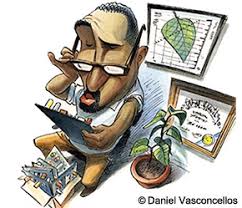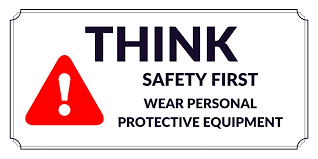
“Self-care is never a selfish act - it is simply good stewardship of the only gift I have, the gift I was put on earth to offer others. Anytime we can listen to true self and give the care it requires, we do it not only for ourselves, but for the many others whose lives we touch.”Parker Palmer, Let Your Life Speak: Listening for the Voice of Vocation

Most recently I received a phone call from a friend informing me she had excruciating back pain and had been rushed to the hospital. She further informed me that she would be undergoing an urgent MRI spine. She had received so many analgesics but nothing seemed to help. Upon hearing this my heart skipped a beat. For a moment so many thoughts crossed my mind. "Does she have a spinal disc bulge? Is it a spinal cord compression? What is going on? Oh! God let there be no spinal injury of whatever kind." I mumbled this prayer so many times as I prepared to go check up on her. I did check up on her and now she is doing much better. The MRI was done it turned out clear which was a great relief for all of us. The excruciating pain was well managed and in a few days, she was back home. To prevent the recurrence of the problem she was just advised on one simple thing. To always comply with workplace ergonomics.

Have you heard of it? Do you know what it means? Do you always apply it? Does its application or lack thereof affect your productivity levels? Don't be baffled by these many questions, just keep them in mind and read through. You will have answers by the end of this.

Ergonomics is simply defined as the study of people's efficiency within the work station. The Marriam Webster dictionary defines it as
1. "An applied science concerned with designing and arranging things people use so that the people and things interact most efficiently and safely."
2. "The design characteristics of an object resulting especially from the application of the science of ergonomics."

The international network for the authority of scientific publication (INASP) in an editorial on OSH 2013, stated that health care workers (HCWs) encounter many hazards some of them include needle stick injuries, back injuries, latex allergy, violence, and stress. They further elucidated on how HCWs are considered immune to injury or illness due to our job of being caregivers. I'm sure this resonates with all of you especially for those in active clinical practice. When one is unwell you never miss a comment like "Oh I thought a medic never gets unwell." With the ongoing Covid-19 and Ebola outbreaks, the impact of the shortage of health care personnel has been finally felt globally. This has led to most healthcare staff getting overworked and as stated in a previous blogpost
https://lilylovelong.blogspot.com/2020/04/wie-fuhlst-du-dich-heute.html more work-related injuries will soon be witnessed if not yet happening.

According to the CDC, "Musculoskeletal disorders account for nearly 70 million physician office visits in the United States annually, and an estimated 130 million total health care encounters including outpatient, hospital, and emergency room visits. In 1999, nearly 1 million people took time away from work to treat and recover from work-related musculoskeletal pain or impairment of function in the low back or upper extremities. The Institute in Medicine estimates the economic burden of work-related musculoskeletal injuries(WMSDs) as measured by compensation costs, lost wages, and lost productivity, range between $45 and $54 billion annually. Furthermore, they concluded that according to Liberty Mutual, the largest workers’ compensation insurance provider in the United States, overexertion injuries cost employers about $13.4 billion every year."

While reviewing the literature I came across a systematic review done in 2017 in the Boston College. It was primarily looking at studies reporting exposure of health workers in African countries to blood and bodily fluids. It analyzed data from studies in different African countries Kenya included and different professional cadres from the surgeons to we the nurses. The researcher identified that the data available was sparse often I'm learning this is due to limited publishing of the researches we conduct. The second conclusion was that there remains a pressing need for high-quality data on occupational hazards to identify the burden of exposures and inform preventive policies in Sub-Saharan Africa and finally there is a need for additional studies to determine whether differential exposures exist between professions and the associations with knowledge, attitudes, practices, and access factors to create targeted strategies to diminish occupational hazards. To read this article click here
https://dx.doi.org/10.5334%2Faogh.2434. My inclination for this study was as a result of two things ;
1. As a result of heavy investment in the HIV field, proper data collection has been conducted on blood and blood-borne exposure risk among health workers. This, therefore, offers an example of ideal practice on how intensive research has been used to direct positive change in practice. There is more to be done but this offers a good example of what can be achieved if duplicated to the other hazards.
2. It was well done and simple enough for any person to comprehend.

In a previous post, I have discussed occupational health and safety(OSH) in relation to workplace violence
https://lilylovelong.blogspot.com/search?q=change+must+come. Today I shall delve into work-related musculoskeletal injuries. How often do you get home and have unexplained muscular aches? WHO refers to musculoskeletal disorders as "any disorder that denotes to the locomotor apparatus ie. the skeleton, cartilage, ligaments, tendons, muscle, and nerves." Having identified that workplace safety greatly contributes to global health workers shortages though sick leaves and termination of practice on medical grounds the WHO published different volumes on prevention of different workplace-related injuries. Follow this link for one on prevention of musculoskeletal injuries
https://www.who.int/occupational_health/publications/muscdisorders/en/.
Some information from the WHO booklet is briefly summarised below.

Common workplace muscular injuries can be categorized as
- Those related to upper extremities
- Those of major articulations
- Those of the lower back
They are then further classified using two basic principles;
1.Acute and painful- Usually caused by a short term heavy load that causes sudden failure of structure of the function. eg when you suddenly lift a heavy box of Hartmans solutions using the wrong lifting techniques then you get a sudden sharp pain in your mid or lower back.
2.Chronic and lingering- Permanent overload leading to increasing pain and structure dysfunction eg Adoption of poor techniques while lifting patients. You may initially feel a dull ache that eases with rest but gradually takes longer to ease after repeatedly doing the same thing to finally getting to a point of continuously having aches that limit your work abilities.

Common risk factors include
- Mechanical overload- It is as a result of when the applied load is greater than the ultimate strength (tensile, compressive, or shear) of the component.
- Repetition frequency
- Exposure time
- Disadvantageous environment eg small workplace, uneven flooring, slippery falls, poor lighting, etc
- Underlying medical condition eg arthritis
To prevent injuries some of the things to be considered include
- The ideal balance- rest episodes between activities
- Work performance strategies
- Avoiding accidents
 Role of employee
Role of employee - Lift loads close to the body
- Lift with both hands symmetrically to the sagittal plane
- Lift heavy objects with an upright trunk by extending the initially flexed legs.
- Use devices if available for carrying heavier loads.
- Carry heavy loads with two people.
- Report immediately it happens to facilitate the correction of errors.
- Properly use provided equipment if unsure seek assistance.
- Exercise your core eg https://youtu.be/XQ2d6aWC1Bk
 Recommendations to employers
Recommendations to employers- Avoid manual handling tasks where possible introduce ergonomic measures to minimize risk.
- Implement rest pauses.
- Avoid implementing frequent handling procedures.
- Provide aids eg hoists, levers, etc
- Mark heavy loads, amorphous loads
- Conduct regular OSH related training.
- Make data collection on workplace injuries less cumbersome and vindictive to facilitate reporting.
- Offer adjustable equipment.
- Provide properly designed work environments.
In our pursuit to continually provide care lets not compromise ourselves for the sake of another
remember “Just when you feel you have no time to relax, know that this is the moment you most need to make time to relax.”
Matt Haig, Reasons to Stay Alive
 Common workplace muscular injuries can be categorized as
Common workplace muscular injuries can be categorized as 
A must read for every healthcare provider
ReplyDeleteGreat piece of document... I love it.... But you should include some demonstration videos about body mechanics in lifting etc..
ReplyDeleteThis is so on point.
ReplyDeleteOn to the practicing part now.
Insightful article
ReplyDeleteThis is so true and it affects so many people. Thank you for this. Self care is very important.
ReplyDelete